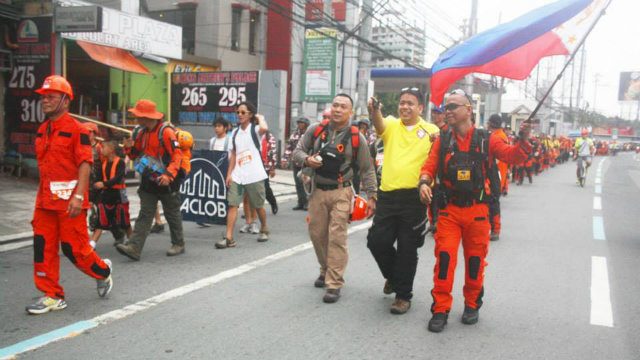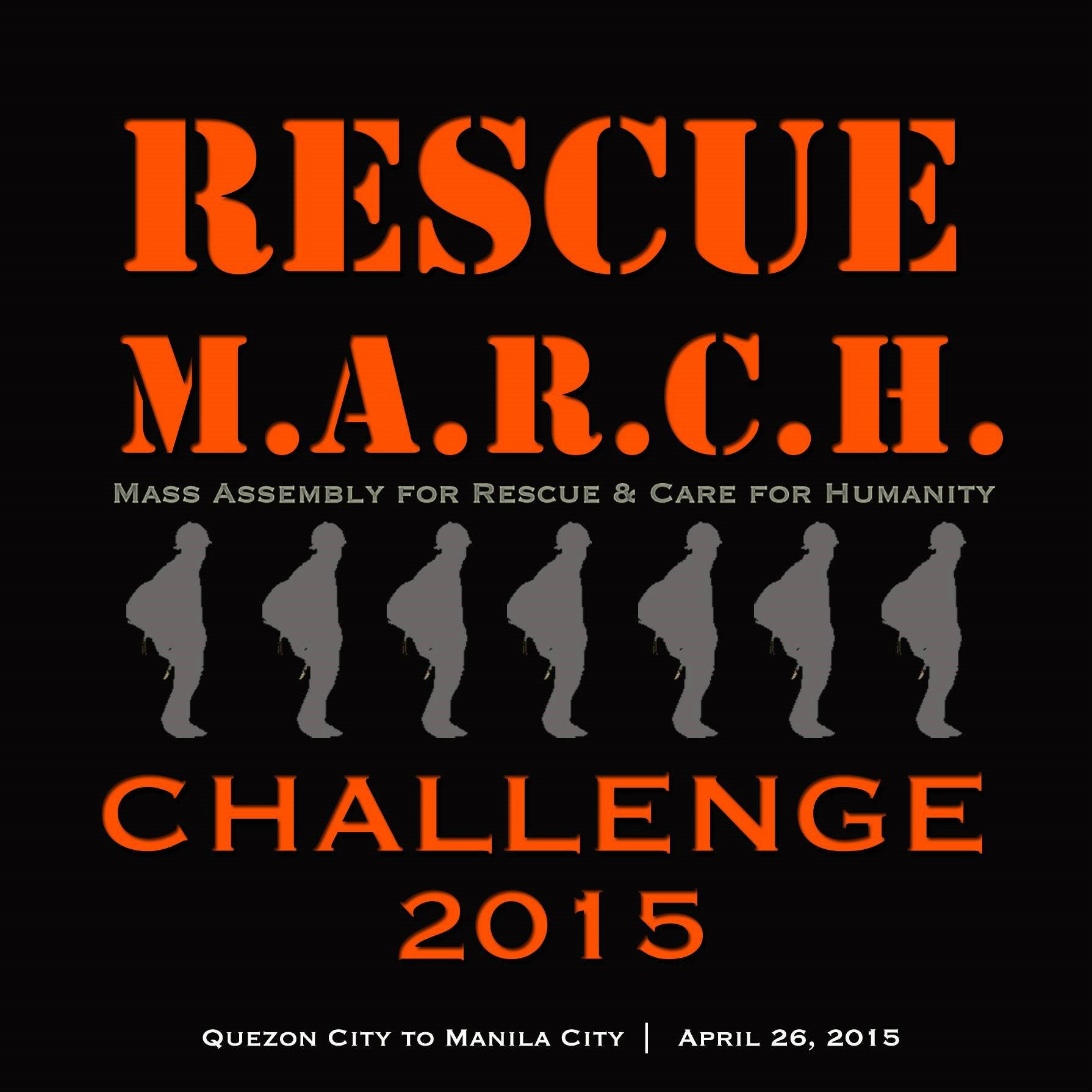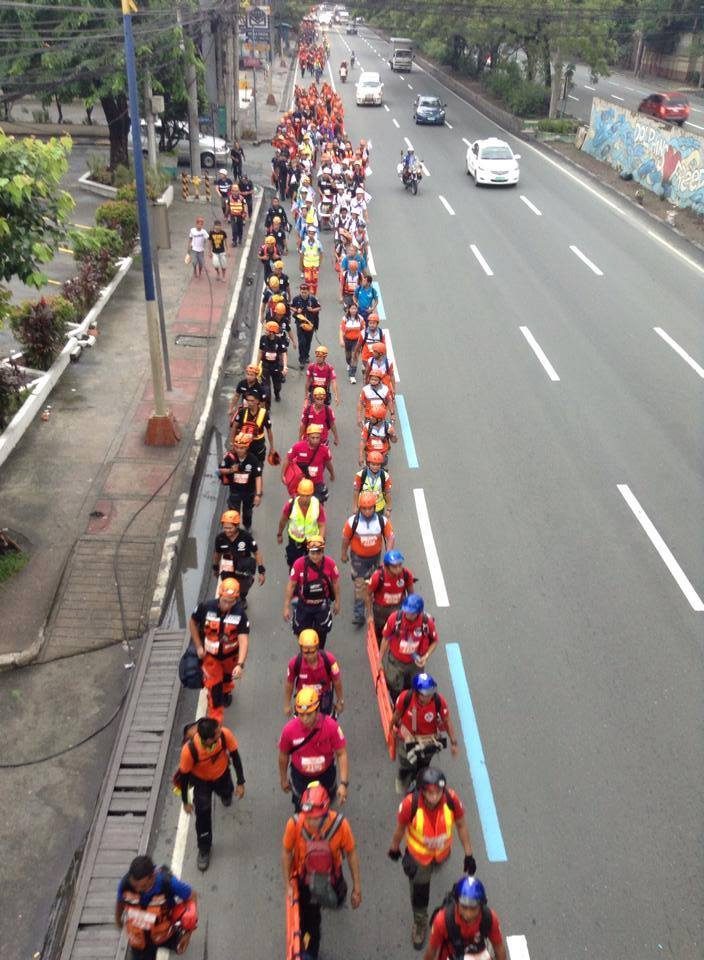SUMMARY
This is AI generated summarization, which may have errors. For context, always refer to the full article.

MANILA, Philippines – As many Filipinos across the country packed their bags for the long Easter weekend, others were unpacking their gear in preparation for something potentially life-threatening.
Super Typhoon Maysak (called Chedeng in the Philippines) barreled its way toward the Philippines On Wednesday, April 1, search and rescue (SAR) teams all over Luzon, and even in the Visayas, cancelled their vacations and prepared to deploy to areas along the typhoon’s path.
These groups – which include the military, police, local disaster risk reduction and management offices, and civic volunteers – form the first and, ultimately, the last line of protection whenever a disaster strikes. They go to the most remote and inaccessible areas to save lives and help the injured, often putting themselves directly in harm’s way.

In spite of the dangerous nature of their job, they do not receive additional compensation or have insurance. Many of them are volunteers who spend their own money to buy rescue gear.
“Kami dito, nag-aambag-ambag lang para makatulong (We just chip in to help others),” said Martin Aguda of Orange Helmets, a volunteer humanitarian and emergency response organization.
Aguda and his fellow volunteers want to raise public consciousness of the important work rescuers perform daily, without hesitation and in spite of the challenges and risks they face.
On April 26, Sunday, Orange Helmets will be gathering over 500 rescuers to highlight their contribution to society in an event called Rescue M.A.R.C.H. (Mass Assembly for Rescue and Care for Humanity). The rescuers, composed of 7-person teams from different organizations in Metro Manila and neighboring cities, will march from the Quezon Circle along Quezon Avenue to the Bonifacio Monument in Manila.
The teams will need to be self-sufficient and carry all the necessary rescue gear. Aguda says that, aside from raising awareness, the march will test the capability and readiness of the rescue teams.
“When a 7.2 magnitude earthquake strikes, roads will be blocked. We have to be ready to walk. Are we really physically fit as rescuers to perform our job?” said Aguda, who is also a safety and security expert. (READ: Online humanitarians respond with Project Agos)

Public support
This is only the second year of Rescue M.A.R.C.H. Last year’s march drew 400 participants.
For this year, Aguda hopes people will go out onto the streets along the march route to show their support for the rescuers. Even a simple act of kindness as giving water or pan de sal to the rescuers is enough to warm their hearts, according to Aguda.
Orange Helmets is also inviting volunteers, organizations, church groups, and businesses to show their support and appreciation by any means. There are designated water stations and pit stops where groups can volunteer or provide food or water to the marchers. Interested groups can sign up using the Google form below.
The Rescue M.A.R.C.H. is supported by the Office of Civil Defense, Quezon City, and Manila City headed by Manila DRRMO Director Johnny Yu.
Reforms needed
That there are so many volunteer firefighters, rescuers, and other civic groups comes as no surprise to Aguda.
“Matulungin ang mga Filipino (Filipinos like to help). Which is why the rescue community was born, especially in light of climate change and all the disasters we face,” he said.
But, he says, more needs to be done to really recognize, train, and equip our rescuers.
The Office of Civil Defense, headed by Undersecretary Alexander Pama, is reviewing the law on disaster risk reduction and management (Republic Act 10121) to see what reforms are needed to give rescuers the training and government support they deserve.
Fortunately, Maysak, later known as Chedeng, weakened into a tropical storm by the time it made landfall on Sunday, April 5. Rescue teams were able to rest easy on Sunday evening, knowing that the worst was over, while still prepared to move at a moment’s notice. – Rappler.com
MovePH supports the RESCUE March on April 26, 2015. Tweet your support using the hashtags #RescueMarch and #SupportYourRescuers.
Orange Helmets is a partner of Project Agos, Rappler’s disaster information management platform.
Add a comment
How does this make you feel?
There are no comments yet. Add your comment to start the conversation.